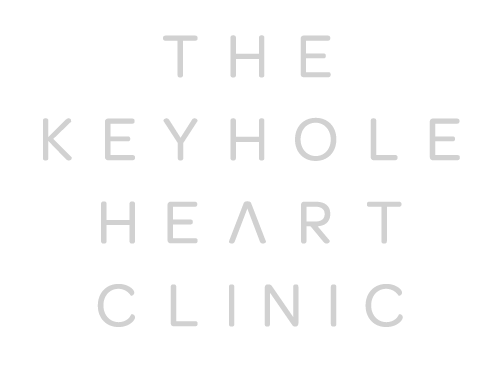Atrial Fibrillation: Are We Taking This Deadly Heart Problem Seriously Enough?

Heart health is a topic that should never be taken lightly. While conditions like heart attacks often grab the headlines, there’s another more subtle threat that can be just as dangerous: atrial fibrillation.
In this article, we’ll delve into the world of atrial fibrillation and discuss why it deserves our serious attention.
Understanding Atrial Fibrillation
Before we delve into the seriousness of atrial fibrillation, let’s find out what it is.
Atrial fibrillation is an irregular and often rapid heart rate that can increase the risk of stroke, heart failure, and other heart-related complications. It occurs when the heart’s upper chambers quiver instead of contracting normally.
The Prevalence of Atrial Fibrillation
Atrial fibrillation is more common than you might think.
In fact, it’s one of the most common heart rhythm disorders, affecting millions of people worldwide. Its prevalence increases with age, and as our population ages, the number of atrial fibrillation cases is expected to rise significantly.
The Deadly Consequences: Now, let’s discuss why Atrial Fibrillation is such a serious concern:
1. Stroke Risk: One of the most alarming aspects of atrial fibrillation is its association with an increased risk of stroke. When the heart chambers don’t contract properly, blood can pool and form clots. These clots can then travel to the brain, leading to a stroke. In fact, atrial fibrillation is responsible for a substantial percentage of all strokes.
2. Heart Failure: Atrial fibrillation can weaken the heart over time, eventually leading to heart failure. The irregular rhythm of atrial fibrillation can cause the heart’s chambers to pump less efficiently, reducing its ability to meet the body’s demands for blood and oxygen.
3. Reduced Quality of Life: Atrial fibrillation can cause symptoms such as palpitations, shortness of breath, fatigue, and dizziness. These symptoms can significantly impact a person’s quality of life, making it difficult to carry out everyday activities.
4. Risk of Blood Clots: Beyond stroke, atrial fibrillation increases the risk of blood clots forming elsewhere in the body, such as in the legs. These clots can break free and travel to the lungs, causing a pulmonary embolism, which can be fatal.
5. Mortality: Atrial fibrillation is associated with an increased risk of death. This risk is often linked to the complications mentioned above, including stroke and heart failure.
The Importance of Early Detection and Management
Given the serious consequences of atrial fibrillation, it’s crucial to take it seriously. Here are some steps to consider:
1. Regular Check-ups: Routine health check-ups can help detect atrial fibrillation early, especially if you have risk factors like high blood pressure, diabetes, or a family history of heart disease.
2. Monitoring Heart Rhythm: Devices like smartwatches and portable monitors can help individuals monitor their heart rhythm and detect irregularities.
3. Lifestyle Changes: Lifestyle modifications, including managing stress, staying physically active, maintaining a healthy diet, and limiting alcohol and caffeine, can help reduce the risk of atrial fibrillation.
4. Medications and Interventions: If diagnosed with atrial fibrillation, your healthcare provider may prescribe medications to control your heart rate and rhythm. In some cases, interventions like ablation or the use of blood thinners to prevent clots may be necessary.
5. Education and Advocacy: Raising awareness about atrial fibrillation and advocating for regular heart health check-ups can help ensure that this condition is taken seriously at both individual and societal levels.
Atrial Fibrillation Treatments
Fortunately, there are several effective treatments available to manage atrial fibrillation. Let’s take a quick look at three primary treatment options:
1. Medication: Medications are often the first line of defense against atrial fibrillation. They help control the heart’s rhythm and rate, reducing the risk of blood clots and stroke. Common medications for atrial fibrillation include anticoagulants (blood thinners) to prevent clot formation and antiarrhythmic drugs to restore and maintain a regular heartbeat. Your healthcare provider will determine the most suitable medication based on your specific atrial fibrillation diagnosis and medical history.
2. Catheter Ablation: Catheter ablation is a minimally invasive procedure that targets the abnormal electrical signals in the heart responsible for atrial fibrillation. During the procedure, thin catheters are inserted through blood vessels and guided to the heart. These catheters deliver precise energy to areas of the heart that are causing the irregular rhythm, effectively “disconnecting” these problematic signals. Catheter ablation can significantly reduce or even eliminate atrial fibrillation episodes in some cases, providing long-term relief for many patients.
3. Convergent Atrial Fibrillation Ablation: Convergent atrial fibrillation ablation is an innovative and multidisciplinary approach to treating atrial fibrillation. It combines the skills of both a cardiac electrophysiologist (EP) and a cardiothoracic surgeon. The procedure involves making small incisions in the abdomen and chest to access the heart. EPs and surgeons work together to create a comprehensive ablation pattern that targets the areas responsible for atrial fibrillation. This combination of endocardial (inside the heart) and epicardial (outside the heart) ablation can be highly effective for patients who haven’t responded well to other treatments or have complex forms of atrial fibrillation.
Keyhole Heart Surgery and Atrial Fibrillation
Keyhole heart surgery treatments for Atrial Fibrillation (AFib) include:
Minimally Invasive Maze Procedure: Creates scar lines on the heart to restore normal rhythm.
Pulmonary Vein Isolation (PVI): Forms scar tissue around pulmonary veins to block irregular electrical signals.
Left Atrial Appendage Closure (LAAC): Reduces stroke risk by sealing off or removing the left atrial appendage.
These less invasive options offer quicker recovery and fewer complications compared to traditional surgery. Consult your healthcare provider for the best treatment for your specific case.
Conclusion on Atrial Fibrillation
In conclusion, atrial fibrillation is not a condition to be underestimated. Its potential to lead to severe complications, including stroke and heart failure, demands our serious attention. By understanding the risks, taking proactive steps to manage our heart health, and advocating for better awareness and treatment, we can collectively tackle this deadly heart problem head-on and make strides toward a healthier future.


